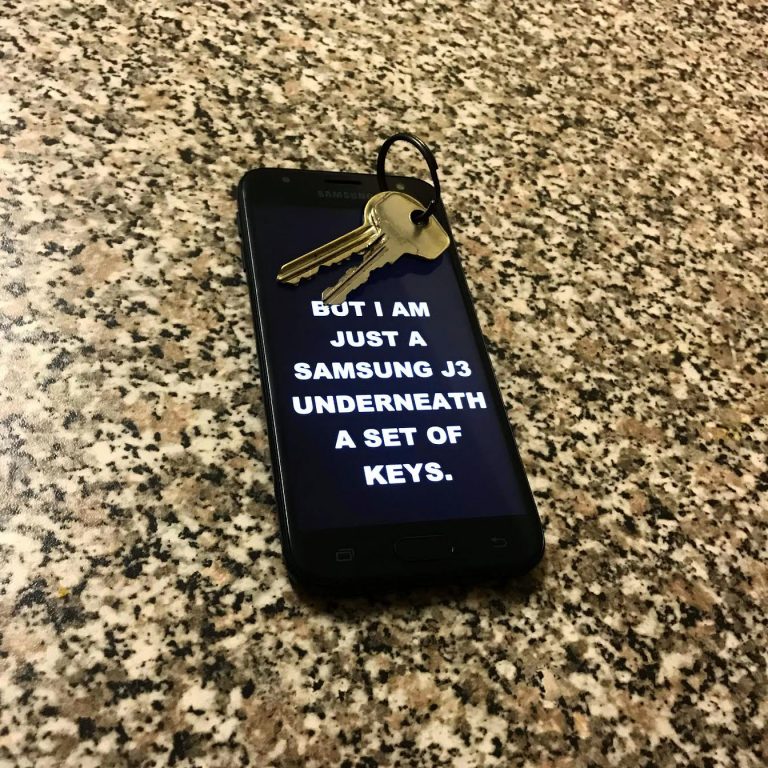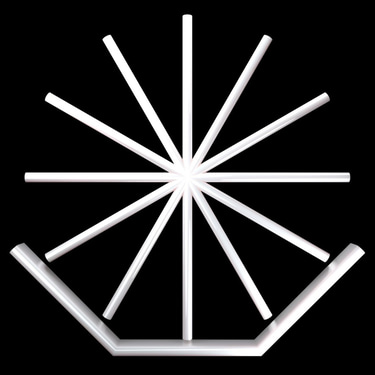Interview with: Adam Leach
An interview with London-based artist Adam Leach about his practice of image sourcing, linguistics, and objecthood.
Lizzie Rutkeyich
5/23/20184 min read
Lizzie: What considerations do you implement in selecting the objects
that appear in your works? Would you say your choices are based more in physicality or concept?
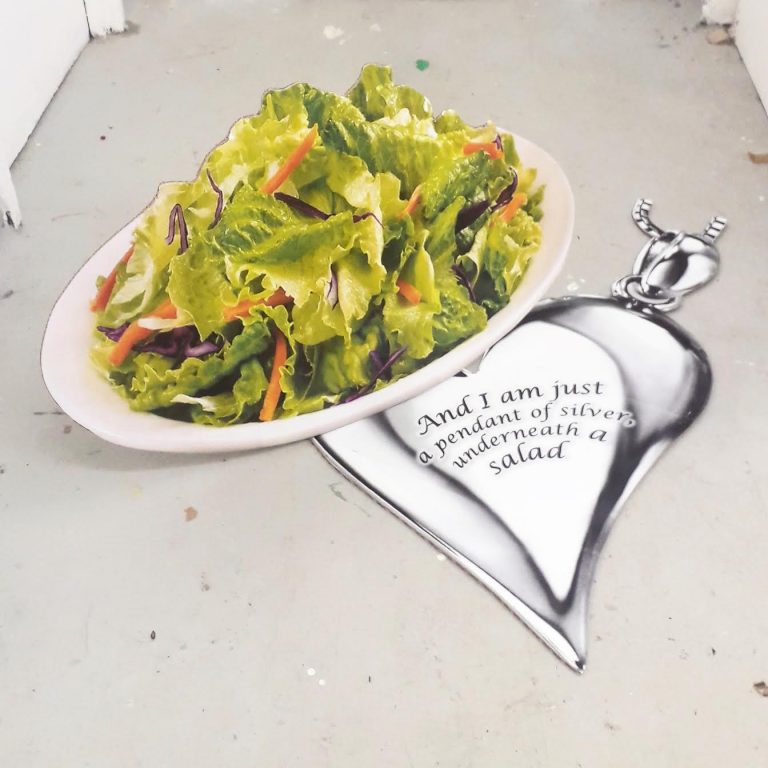



Adam: I think much of the objects and imagery I choose to use in my work is founded in writing. I keep a list of words that I think have something maybe poetic, humorous, sad, or exciting about them and I spend a lot of time using Google images, searching for specific pictures and saving things I think are special- I like approaching Google images as a pictorial database for the world. There’s an image of anything and everything. This too is a pillar in my work; I treat everything equally.
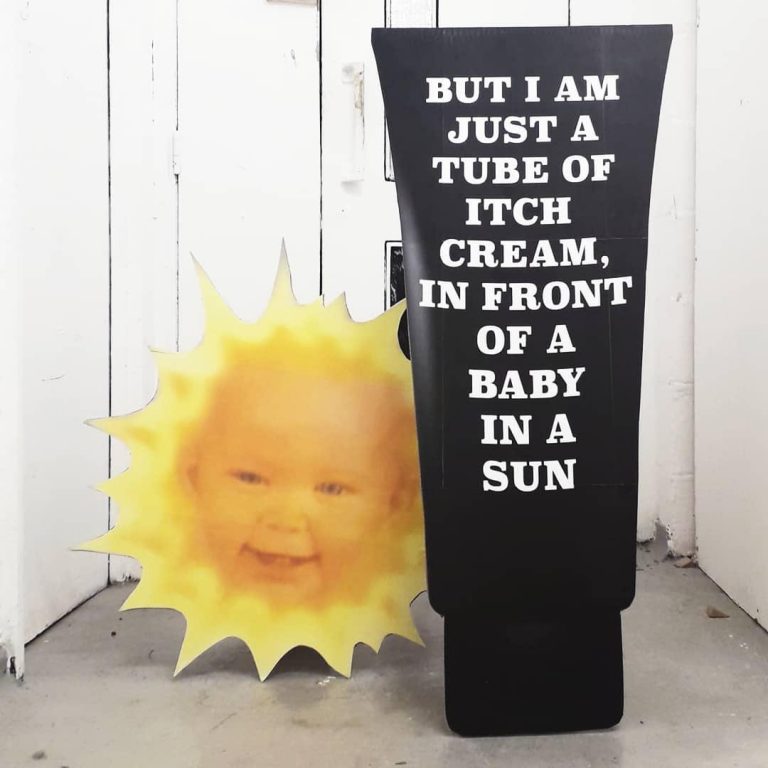

A radish is no different than a sponge or a postman because I’m not thinking about what the pictures of the objects are about, I’m thinking of them as pictures and then pictures as things on their own. There is a certain dilution of hierarchy when it comes to my decision making.
Lizzie: So, how do you relate the images when combining them? For example, what is the relationship between wet radishes and a trap door if not one of background/foreground or other pictorial hierarchy? Is relating them even a part of your process?
Adam: The relationship is linguistic. I like to see the wobble in language that happens when odd things are coupled- I think theres something quite naughty about writing in cursive over something that perhaps really doesn’t want to be manipulated in that way. I find it perverts them slightly in a way that feels like there is something complex and unusual at play. There’s a potential in all the images I use to carry intricate meaning- I have relied on this in my work in the past where an image or a motif functions as a vehicle to discuss maybe a historical concept or something research-based. Now, I am more concerned with why this was possible. What was there in images that allowed them to be bent and stretched to discuss an idea? If they could serve as a metaphor, what happens when there is nothing to be metaphorical about and the images are left alone?

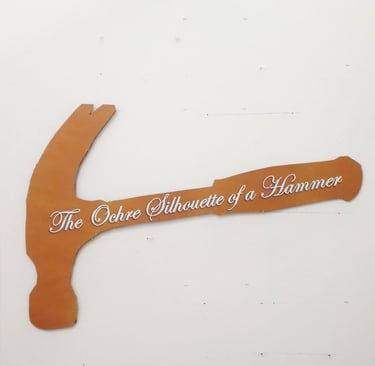
Lizzie: The text descriptions of the imagery hint at narrative or metaphorical meaning while simultaneously withholding and almost criticizing such a reading. It makes for an almost uncanny experience with projection onto art, objects in general, and art objects… When you find objects in the real world, do you often find yourself projecting personal meanings onto them? Do you think your practice relates to this kind of projection?
Adam: Not really, my work is impersonal in the sense that it is about the world, detached of my feelings. However, in some ways it is very personal because it is married very closely to how I view and interact with pictures.
In my work I am isolating these images to give them a chance to be looked at without all the other mess they usually sit in. A pair of socks, for example- as a cardboard cut-out in a white space- everything that puts socks on the margins of your life and that characterized them as background detritus is atrophied and there is a moment where you can look at socks in all their indisputable sock-ness. They might start to lose their sense of realness and feel more like an idea than a thing and then as you look at the other pictures, you just realize that all these things are just ideas and concepts.
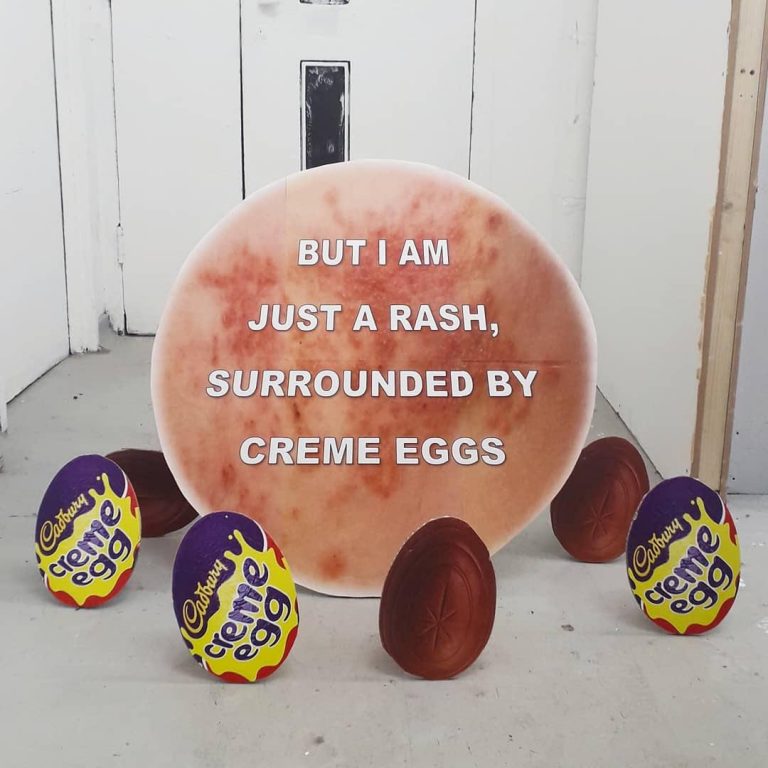

Adam: I think something else for me to touch on should be the phrase, “But I am just a _____” that appears on my work a lot. I liked that, in a cardboard cut-out, there’s a severing of context going on. The images are given space to breathe as nothing but what they are- a salad is a salad and nothing but a salad-and in a way, they end up being put on a pedestal, especially when they are made into an artwork. I like the idea that the images are being backed into a corner, as if they’re being interrogated about their very nature and all they can respond with is a rather pathetic definition. Cynically, I could be saying that the action of making and looking at something as artwork is aggressive, but I don’t really know about that.
